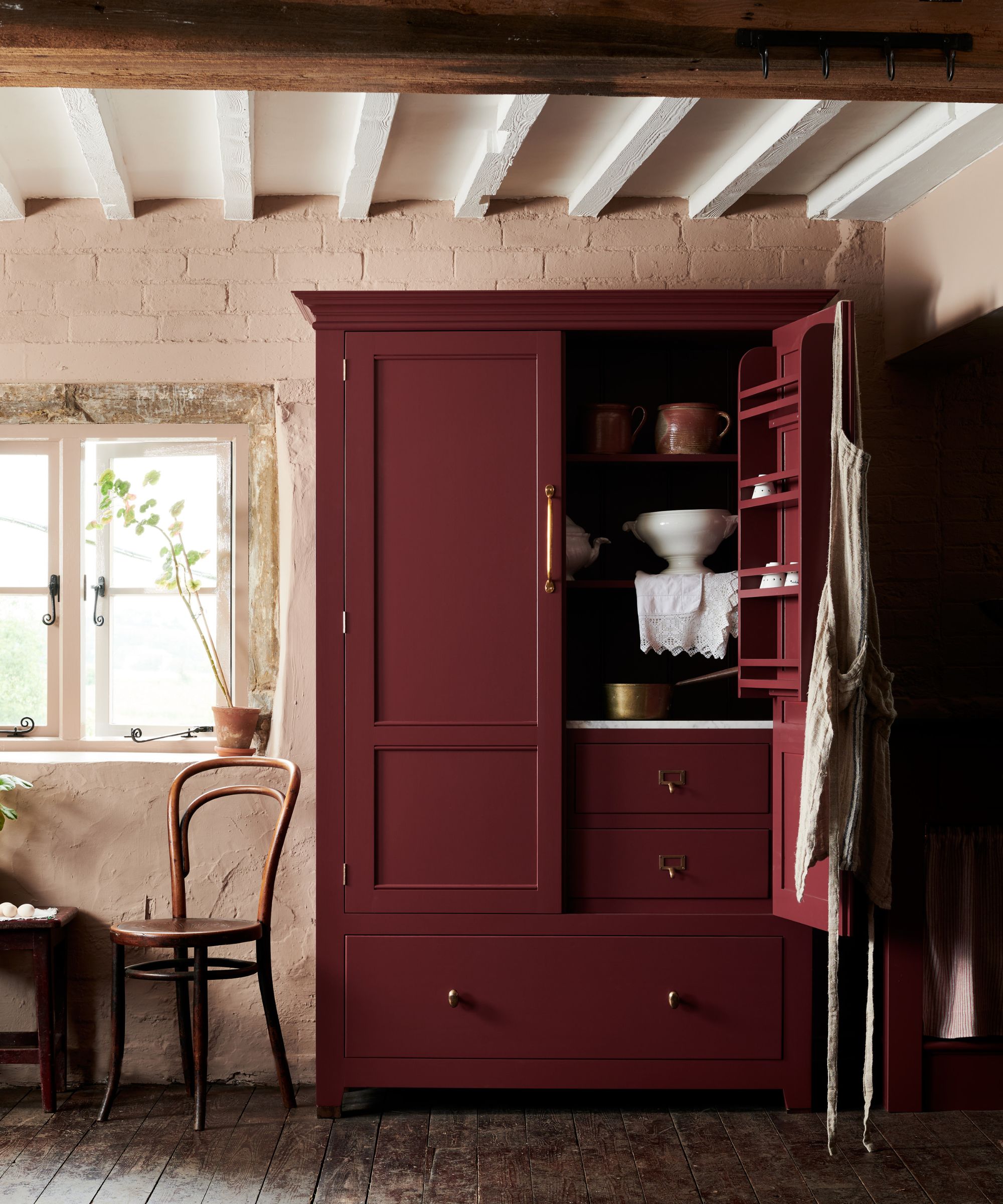What's the difference between a larder, pantry, and back kitchen? Designers explain what they are and how to choose the right one for your kitchen
Get to grips with the features of these kitchen add-ons to decide which best suits your space


Kitchen storage is something everyone has to consider. Appliances, food, and kitchenware all need a home, which is where additions like a pantry, larder, or even a back kitchen come in handy. But what is the difference?
Designers often recommend these additional storage spaces, but understanding what each actually is and how they differ from one another will help you decide which is the best choice for your kitchen ideas.
And who better to ask than the experts who have experience in designing multiple kitchens? Here, designers explain the difference between a larder, pantry, and back kitchen and how they choose the right one.
What's the difference between a larder, pantry, and back kitchen?

If you're designing or revamping your kitchen, you've probably been considering different storage solutions. Larders, pantries, and back kitchens are all viable options, but what are the main differences?
Usually the smallest of the three, a larder is often a freestanding piece of kitchen furniture, although it can also be introduced as part of built-in cabinetry. It's integrated into the kitchen, rather than being a room off from the main space.
'A larder is typically a more traditional style of food storage, with cool shelves often reserved for perishable items like butter, cheese, or fresh produce. We often design larders as a more open, aesthetically pleasing space within a kitchen featuring bespoke cabinetry,' explains interior designer Lauren Gilberthorpe.

'A pantry traditionally refers to a smaller, dedicated space for storing food staples, dry goods, and sometimes small appliances. Often located just off the main kitchen, pantries are much loved for their simplicity and functionality, offering quick and easy access to everyday essentials,' she adds.
A back kitchen is slightly different from a larder and a pantry. Where food and sometimes small appliances are stored, a back kitchen has a greater function. 'A back kitchen is essentially a secondary, larger space designed for the more utilitarian aspects of food preparation and storage,' says Lauren.
'Sometimes referred to as a scullery, it is where messes are hidden, and tasks like dishwashing, baking, or even flower arranging can be managed. Back kitchens often accommodate larger appliances, extra sinks, and generous storage for cookware, making them a practical and discreet addition to busy households.'
How to choose between a larder, pantry, and back kitchen

Whether you choose a larder, pantry, or back kitchen will depend on the space you have and what your desired use is. Do you just want some extra food storage, or do you want a separate space dedicated to the more functional aspects of a kitchen?
'A pantry tends to be much smaller than a back kitchen and only really needs to have lots of shelving for storage rather than additional work surface. Where space is not available then a larder is the perfect choice,' explains Jayne Everett, creative designer at Naked Kitchens.
The benefit of a larder is that it can be customized to suit the space you have in your kitchen. It can be a simple shelved unit for food, or something slightly larger with drawers and various compartments. It's the best choice if you don't have space for a pantry and if you want to specifically store goods that need to be kept cool.
There's also the added benefit that a larder can add a real design statement to your kitchen. 'I love a larder as it's such a multipurpose piece of furniture. It is always the cabinet our clients love to show off in their new kitchen, and understandably as they are fabulous,' adds Jayne.

If you are just looking to store dry goods (particularly cans and dried ingredients), a pantry is your best choice. They really vary in size, from small cupboards to walk-in storage spaces, so you can customize them to suit your space and needs. This is usually the choosing point between a larder and a pantry.
'A pantry is ideal if you’re looking for compact and efficient storage for dry goods and smaller appliances. For those who enjoy cooking and entertaining, a larder adds a sense of charm and organization, with everything beautifully arranged and within reach,' adds Lauren.
A back kitchen, however, is a much larger space and investment. 'If cooking and entertaining are a frequent part of your lifestyle, a back kitchen offers that extra space to work without cluttering the main kitchen,' says interior designer Becky Shea.

It's the more luxurious choice, but it's incredibly functional for anyone who does a lot of cooking and hosting. You will need a big space to accommodate a back kitchen, but interior designers assure you it's a worthy investment.
'While all three serve unique purposes, the back kitchen holds a special appeal for me. It offers so much versatility, functioning as a behind-the-scenes workhorse that allows the main kitchen to remain a serene, welcoming space,' says Lauren.
'Back kitchens can also be beautifully designed, incorporating textures and materials that make them an extension of the home’s aesthetic rather than just a utilitarian space. They’re particularly well-suited to modern family life, where the balance between practicality and style is key,' she adds.

There's no denying that all of these options add plenty of benefits to your kitchen. There's no right or wrong choice – they're all fabulous options, it simply comes down to household needs.
'A pantry, larder, and back kitchen each serve unique roles, but they’re all integral parts of a well-designed home. Choosing between them really depends on the needs of the family and how the kitchen is used,' says Becky.
For designers, the practical decision is a larder for a charming feature and to store cold foods, a pantry for more storage space for canned and dried goods, and a back kitchen is the luxurious choice for creating a space dedicated to the more functional needs to act as 'an overflow' of the primary kitchen.
Similar but performing different functions, this expert guide fills in all the blanks to help you choose the best option for your kitchen. Whether you choose a pantry, larder, or back kitchen, you can create a stylish addition to your space.
Sign up to the Homes & Gardens newsletter
Design expertise in your inbox – from inspiring decorating ideas and beautiful celebrity homes to practical gardening advice and shopping round-ups.

I’ve worked in the interiors magazine industry for the past five years and joined Homes & Gardens at the beginning of 2024 as the Kitchens & Bathrooms editor. While I love every part of interior design, kitchens and bathrooms are some of the most exciting to design, conceptualize, and write about. There are so many trends, materials, colors, and playful decor elements to explore and experiment with.
-
 7 of the best tomatoes for growing in pots - expert growers pick their top varieties ideal for large harvests from containers
7 of the best tomatoes for growing in pots - expert growers pick their top varieties ideal for large harvests from containersYou can enjoy bumper homegrown harvests in small spaces
By Drew Swainston Published
-
 Drew Barrymore creates a 'balanced' kitchen in 4 easy steps – her rules will make your small, compact countertops feel beautiful
Drew Barrymore creates a 'balanced' kitchen in 4 easy steps – her rules will make your small, compact countertops feel beautifulDrew proves that with the right styling (and chic appliances), you can make even the smallest of kitchens look harmonious
By Hannah Ziegler Published